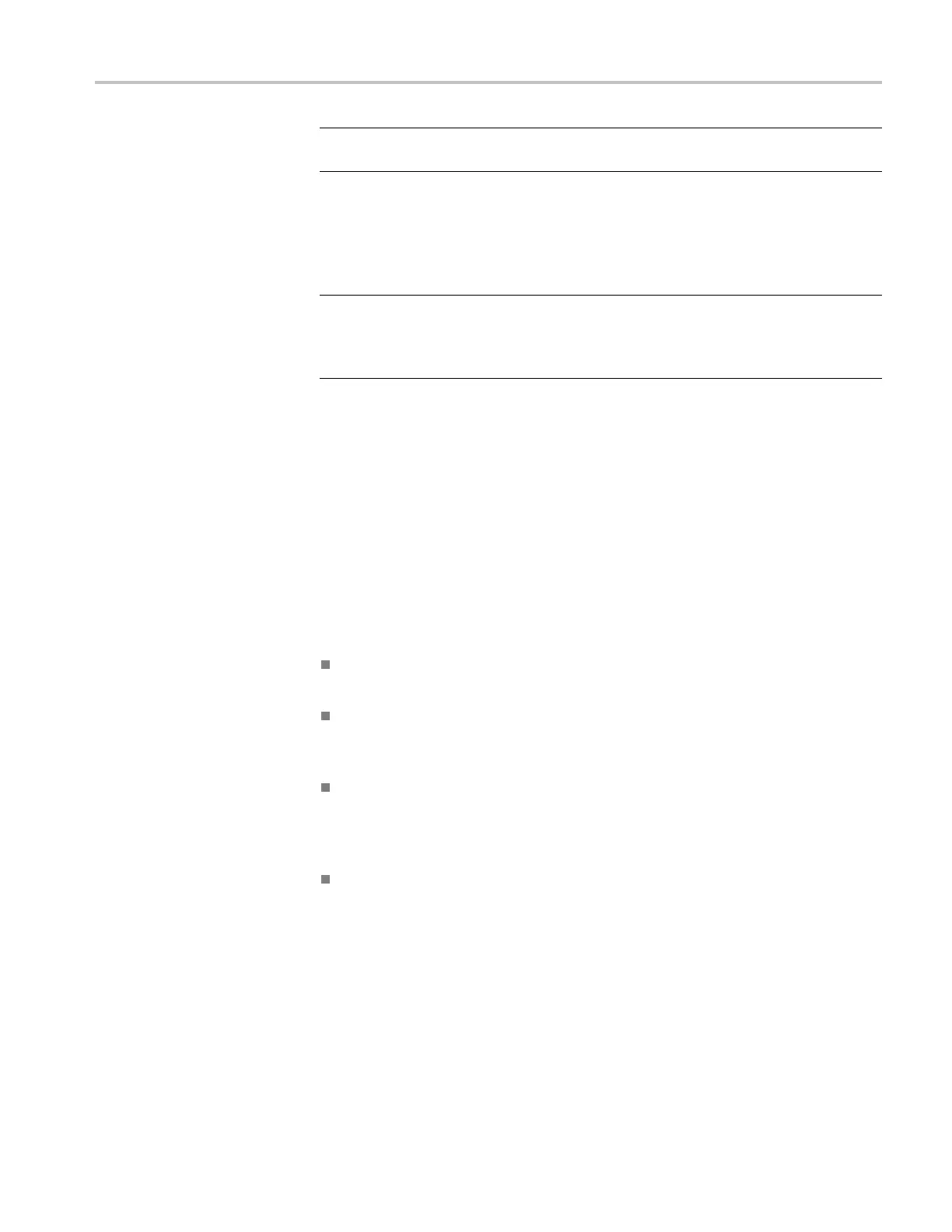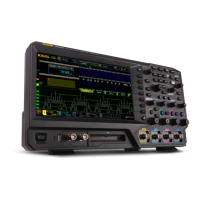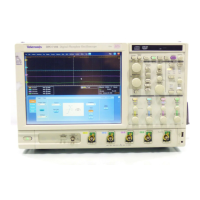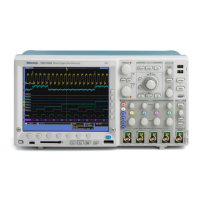Commands Listed in Alphabetical Order
NOTE. Characte
rization (see the PHAseref:CHAR command) is required
whenever the phase correction mode is changed.
The 82A04 Pha
se Reference Module provides a phase-correction timebase. This
timebase, in turn, supports ultra-low trigger jitter (typical is 200 fsec RMS),
improving the fidelity of acquired signals.
NOTE. Data acquisition is fundamentally different when the instrument acquires
data using the phase-correction timebase versus the internal timebase. To
investigate phase-correction-timebase and internal-timebase behaviors relative to
acquisit
ion, see the instrument online help.
Group
Phase Reference
Syntax
PHAseref:MODe {OFF | FREerun | TRIGger | SSCTrigger}
PHAseref:MODe?
Related Commands
PHAseref:CH<x>:FREQuency, PHAseref:CHAR, PHAseref:MODe,
PHAseref:SOUrce, PHAseref:CH<x>:RANge?, PHAseref:CH<x>:STAtus?
Arguments
OFF turns off the phase correction timebase, so that the instrument uses its
normal timebase.
FREerun turns on the phase correction timebase and runs it in Free Run m ode,
in which the trigger is ignored for purposes of determining the horizontal
acquisition window.
TRIGger turns on the phase correction timebase in Triggered mode in which
the trigger event is used to determine horizontal acquisition window. The
trigger that you provide determines where in the data stream the waveform
record is taken.
SSCTrigger turns on the phase correction timebase in Triggered Spread
Spectrum Clock mode. Triggered (SSC) Mode operates exactly the same as
Triggered Mode except that the instrument assumes, and accommodates (up
to approximately 5000ppm), some amount of Spread Spectrum Clocking
contained on the Phase Reference input clock.
Examples
PHASEREF:MODE TRIGGER enables the phase correction timebase in the
Triggered mode, using the Phase Reference Module set as the phase reference
source (selectable using the PHAseref:SOUrce comma nd).
DSA/CSA/TDS8X00/B Series Programmer Manual 2-267

